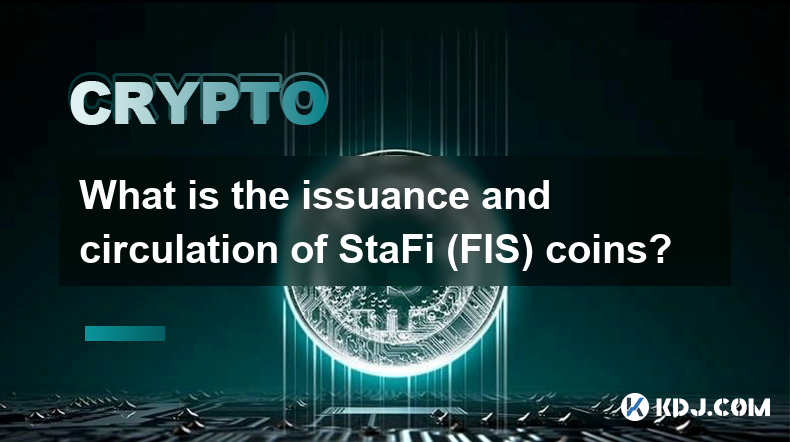-
 Bitcoin
Bitcoin $107,770.4059
-1.97% -
 Ethereum
Ethereum $2,493.7356
-3.93% -
 Tether USDt
Tether USDt $1.0002
-0.02% -
 XRP
XRP $2.2203
-2.55% -
 BNB
BNB $652.1421
-1.54% -
 Solana
Solana $146.9193
-3.62% -
 USDC
USDC $1.0002
0.02% -
 TRON
TRON $0.2838
-0.55% -
 Dogecoin
Dogecoin $0.1628
-5.62% -
 Cardano
Cardano $0.5703
-4.75% -
 Hyperliquid
Hyperliquid $38.6498
-4.85% -
 Sui
Sui $2.8450
-5.48% -
 Bitcoin Cash
Bitcoin Cash $489.1135
-1.87% -
 Chainlink
Chainlink $13.0730
-4.91% -
 UNUS SED LEO
UNUS SED LEO $9.0733
0.42% -
 Avalanche
Avalanche $17.7084
-4.89% -
 Stellar
Stellar $0.2381
-2.40% -
 Toncoin
Toncoin $2.7521
-3.88% -
 Shiba Inu
Shiba Inu $0.0...01134
-4.70% -
 Litecoin
Litecoin $86.6015
-3.52% -
 Hedera
Hedera $0.1529
-4.15% -
 Monero
Monero $314.6637
-0.97% -
 Dai
Dai $0.9999
-0.01% -
 Polkadot
Polkadot $3.3457
-5.84% -
 Ethena USDe
Ethena USDe $1.0001
-0.01% -
 Bitget Token
Bitget Token $4.3968
-3.94% -
 Uniswap
Uniswap $6.9333
-9.10% -
 Pepe
Pepe $0.0...09620
-5.08% -
 Aave
Aave $264.0087
-5.99% -
 Pi
Pi $0.4674
-4.92%
What is the issuance and circulation of StaFi (FIS) coins?
StaFi's (FIS) token economics is designed to balance network security, user participation, and token value appreciation through fixed token issuance, a token burn mechanism, and incentivized staking rewards.
Jan 07, 2025 at 10:01 pm

Key Points
- Understanding the StaFi (FIS) Token: Issuance and Circulation Mechanism
- Exploring the Tokenomics of StaFi (FIS)
- Comprehensive Overview of FIS Coin Distribution and Allocation
- Analyzing the Token Burn Mechanisms and Staking Rewards of FIS
- Evaluating the Security Measures Implemented for FIS Token
- Exploring the Potential of StaFi (FIS) in the Liquid Staking Ecosystem
Understanding the StaFi (FIS) Token: Issuance and Circulation Mechanism
The StaFi (FIS) token lies at the core of the StaFi ecosystem, serving as the backbone for its liquid staking protocol. Its issuance and circulation are designed to ensure network security, incentivize participation, and foster a robust token economy.
Initial Token Distribution: During the StaFi genesis block creation, a total supply of 100,000,000 FIS tokens was minted. These tokens were distributed as follows:
- Seed Round (30%): To early investors and contributors who supported StaFi's development
- Private Round (15%): To strategic partners and institutional investors
- Public Sale (25%): To retail investors who participated in StaFi's token offering
- Team and Advisors (10%): To the StaFi team and its advisors, subject to vesting periods
- Ecosystem Fund (20%): Reserved for future ecosystem development and community initiatives
- Token Issuance: StaFi has implemented a fixed token issuance rate to control inflation and maintain the token's scarcity. New FIS tokens are minted based on a predetermined issuance schedule, with the total supply capped at 100,000,000 tokens.
- Token Burn Mechanism: To balance token supply and demand, StaFi has introduced a token burn mechanism that reduces the circulating supply of FIS tokens. A portion of transaction fees generated through the StaFi platform is used to purchase FIS tokens from the market, which are then burned and removed from circulation.
- Staking Rewards: FIS token holders can earn staking rewards by participating in the StaFi network. By staking their FIS tokens, users contribute to the network's security and consensus mechanism, receiving proportional rewards for their participation. The amount of staking rewards is determined by the amount of FIS tokens staked and the duration of the staking period.
Exploring the Tokenomics of StaFi (FIS)
The StaFi tokenomics framework aims to strike a balance between network security, user participation, and token value appreciation. Its design fosters a virtuous cycle of incentivized participation, limited token issuance, and sustained token value.
- Network Security: Staking FIS tokens is a crucial aspect of the StaFi ecosystem's security and consensus mechanisms. By staking FIS, users become validators or delegators, contributing to the network's consensus process and transaction validation. In return, stakers earn block rewards and transaction fees, incentivizing their participation and securing the network.
- User Participation: The StaFi platform offers a range of incentives to encourage user participation. Staking FIS tokens not only contributes to network security but also earns staking rewards, incentivizing users to hold and stake FIS for long-term gains. Additionally, the StaFi platform provides liquidity providers with yield farming opportunities, rewarding them for providing liquidity to the StaFi token pool.
- Token Value Appreciation: StaFi's tokenomics model is designed to support the long-term appreciation of the FIS token. The limited token issuance rate, the token burn mechanism, and the network's revenue-generating model contribute to the scarcity and value growth potential of FIS. As the network grows and attracts more users, demand for FIS tokens is expected to increase, leading to price appreciation and long-term value growth.
Comprehensive Overview of FIS Coin Distribution and Allocation
The FIS coin distribution and allocation strategy ensures the token's fair and equitable distribution, fostering a robust token economy and encouraging widespread adoption.
- Seed and Private Sales (45%): The seed and private sales accounted for approximately 45% of the total FIS token supply. These sales were conducted to secure funding for the project's early development and attract key strategic partners and investors.
- Public Sale (25%): The public sale offered 25% of the total FIS tokens to retail investors globally, giving them an opportunity to participate in the StaFi ecosystem and support the project's growth.
- Team and Advisors Allocation (10%): The team and advisors of StaFi were allocated 10% of the total token supply. This allocation is subject to vesting periods to ensure long-term alignment and commitment to the project's success.
- Ecosystem Fund (20%): The ecosystem fund, comprising 20% of the total token supply, is reserved for various initiatives, including community development, marketing, partnerships, and future ecosystem development. The release of these tokens is controlled by the StaFi Foundation to ensure responsible and strategic utilization.
Analyzing the Token Burn Mechanisms and Staking Rewards of FIS
StaFi's token burn mechanisms and staking rewards play pivotal roles in maintaining the token's value and incenti
Disclaimer:info@kdj.com
The information provided is not trading advice. kdj.com does not assume any responsibility for any investments made based on the information provided in this article. Cryptocurrencies are highly volatile and it is highly recommended that you invest with caution after thorough research!
If you believe that the content used on this website infringes your copyright, please contact us immediately (info@kdj.com) and we will delete it promptly.
- Bitcoin's Pattern Break: Are HODLers the Key to the Next Surge?
- 2025-07-04 18:50:12
- Bitcoin Price, Trump's Bill, and the $150K Dream: A NYC Take
- 2025-07-04 19:50:12
- Ethereum, LILPEPE, and the July Bounce: Will Pepe Steal ETH's Thunder?
- 2025-07-04 19:10:12
- Binance Institutional Loans: Unlocking 4x Leverage and Zero Interest for Whales
- 2025-07-04 19:15:12
- Bitcoin Bull Run: Analysts Eye Peak in Late 2025?
- 2025-07-04 19:20:13
- Pepe Indicators, Bullish Forecast: Can the Meme Coin Rally?
- 2025-07-04 19:25:12
Related knowledge

How to customize USDT TRC20 mining fees? Flexible adjustment tutorial
Jun 13,2025 at 01:42am
Understanding USDT TRC20 Mining FeesMining fees on the TRON (TRC20) network are essential for processing transactions. Unlike Bitcoin or Ethereum, where miners directly validate transactions, TRON uses a delegated proof-of-stake (DPoS) mechanism. However, users still need to pay bandwidth and energy fees, which are collectively referred to as 'mining fe...

USDT TRC20 transaction is stuck? Solution summary
Jun 14,2025 at 11:15pm
Understanding USDT TRC20 TransactionsWhen users mention that a USDT TRC20 transaction is stuck, they typically refer to a situation where the transfer of Tether (USDT) on the TRON blockchain has not been confirmed for an extended period. This issue may arise due to various reasons such as network congestion, insufficient transaction fees, or wallet-rela...

How to cancel USDT TRC20 unconfirmed transactions? Operation guide
Jun 13,2025 at 11:01pm
Understanding USDT TRC20 Unconfirmed TransactionsWhen dealing with USDT TRC20 transactions, it’s crucial to understand what an unconfirmed transaction means. An unconfirmed transaction is one that has been broadcasted to the blockchain network but hasn’t yet been included in a block. This typically occurs due to low transaction fees or network congestio...

How to check USDT TRC20 balance? Introduction to multiple query methods
Jun 21,2025 at 02:42am
Understanding USDT TRC20 and Its ImportanceUSDT (Tether) is one of the most widely used stablecoins in the cryptocurrency market. It exists on multiple blockchain networks, including TRC20, which operates on the Tron (TRX) network. Checking your USDT TRC20 balance accurately is crucial for users who hold or transact with this asset. Whether you're sendi...

What to do if USDT TRC20 transfers are congested? Speed up trading skills
Jun 13,2025 at 09:56am
Understanding USDT TRC20 Transfer CongestionWhen transferring USDT TRC20, users may occasionally experience delays or congestion. This typically occurs due to network overload on the TRON blockchain, which hosts the TRC20 version of Tether. Unlike the ERC20 variant (which runs on Ethereum), TRC20 transactions are generally faster and cheaper, but during...

The relationship between USDT TRC20 and TRON chain: technical background analysis
Jun 12,2025 at 01:28pm
What is USDT TRC20?USDT TRC20 refers to the Tether (USDT) token issued on the TRON blockchain using the TRC-20 standard. Unlike the more commonly known ERC-20 version of USDT (which runs on Ethereum), the TRC-20 variant leverages the TRON network's infrastructure for faster and cheaper transactions. The emergence of this version came as part of Tether’s...

How to customize USDT TRC20 mining fees? Flexible adjustment tutorial
Jun 13,2025 at 01:42am
Understanding USDT TRC20 Mining FeesMining fees on the TRON (TRC20) network are essential for processing transactions. Unlike Bitcoin or Ethereum, where miners directly validate transactions, TRON uses a delegated proof-of-stake (DPoS) mechanism. However, users still need to pay bandwidth and energy fees, which are collectively referred to as 'mining fe...

USDT TRC20 transaction is stuck? Solution summary
Jun 14,2025 at 11:15pm
Understanding USDT TRC20 TransactionsWhen users mention that a USDT TRC20 transaction is stuck, they typically refer to a situation where the transfer of Tether (USDT) on the TRON blockchain has not been confirmed for an extended period. This issue may arise due to various reasons such as network congestion, insufficient transaction fees, or wallet-rela...

How to cancel USDT TRC20 unconfirmed transactions? Operation guide
Jun 13,2025 at 11:01pm
Understanding USDT TRC20 Unconfirmed TransactionsWhen dealing with USDT TRC20 transactions, it’s crucial to understand what an unconfirmed transaction means. An unconfirmed transaction is one that has been broadcasted to the blockchain network but hasn’t yet been included in a block. This typically occurs due to low transaction fees or network congestio...

How to check USDT TRC20 balance? Introduction to multiple query methods
Jun 21,2025 at 02:42am
Understanding USDT TRC20 and Its ImportanceUSDT (Tether) is one of the most widely used stablecoins in the cryptocurrency market. It exists on multiple blockchain networks, including TRC20, which operates on the Tron (TRX) network. Checking your USDT TRC20 balance accurately is crucial for users who hold or transact with this asset. Whether you're sendi...

What to do if USDT TRC20 transfers are congested? Speed up trading skills
Jun 13,2025 at 09:56am
Understanding USDT TRC20 Transfer CongestionWhen transferring USDT TRC20, users may occasionally experience delays or congestion. This typically occurs due to network overload on the TRON blockchain, which hosts the TRC20 version of Tether. Unlike the ERC20 variant (which runs on Ethereum), TRC20 transactions are generally faster and cheaper, but during...

The relationship between USDT TRC20 and TRON chain: technical background analysis
Jun 12,2025 at 01:28pm
What is USDT TRC20?USDT TRC20 refers to the Tether (USDT) token issued on the TRON blockchain using the TRC-20 standard. Unlike the more commonly known ERC-20 version of USDT (which runs on Ethereum), the TRC-20 variant leverages the TRON network's infrastructure for faster and cheaper transactions. The emergence of this version came as part of Tether’s...
See all articles

























































































